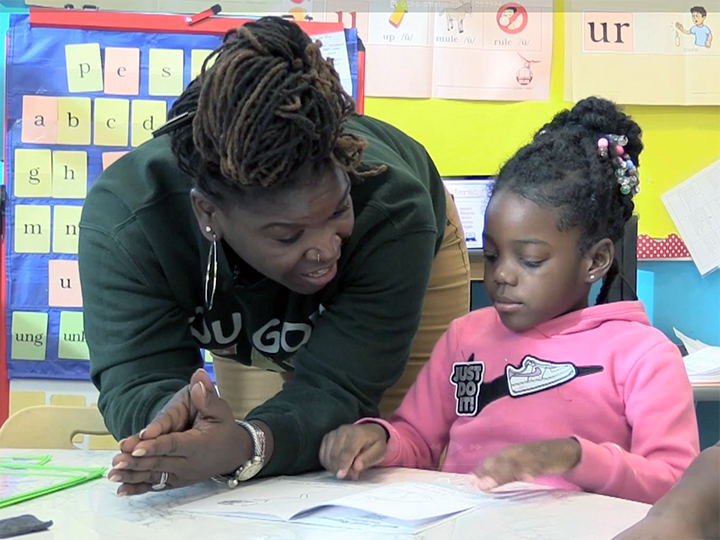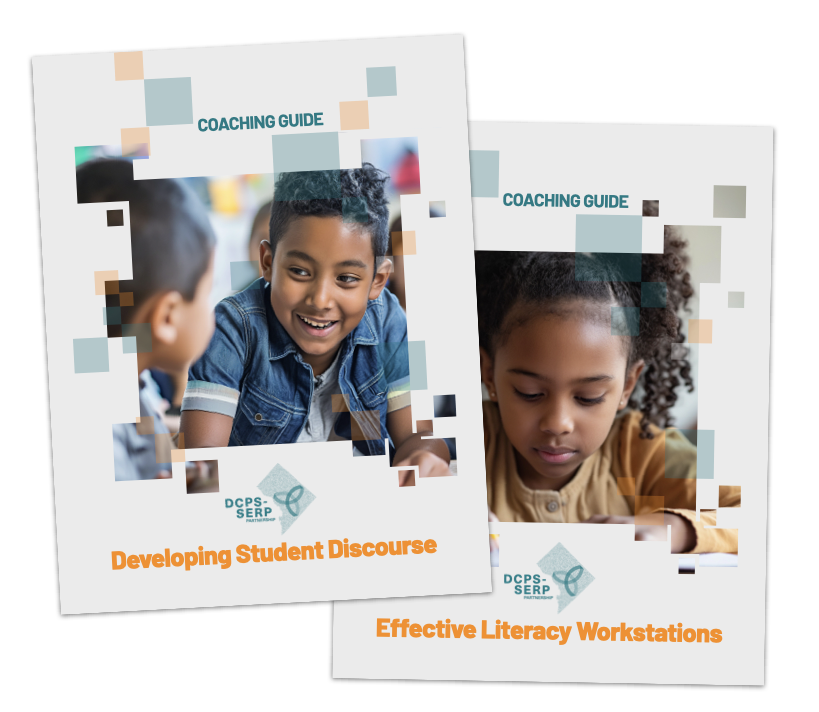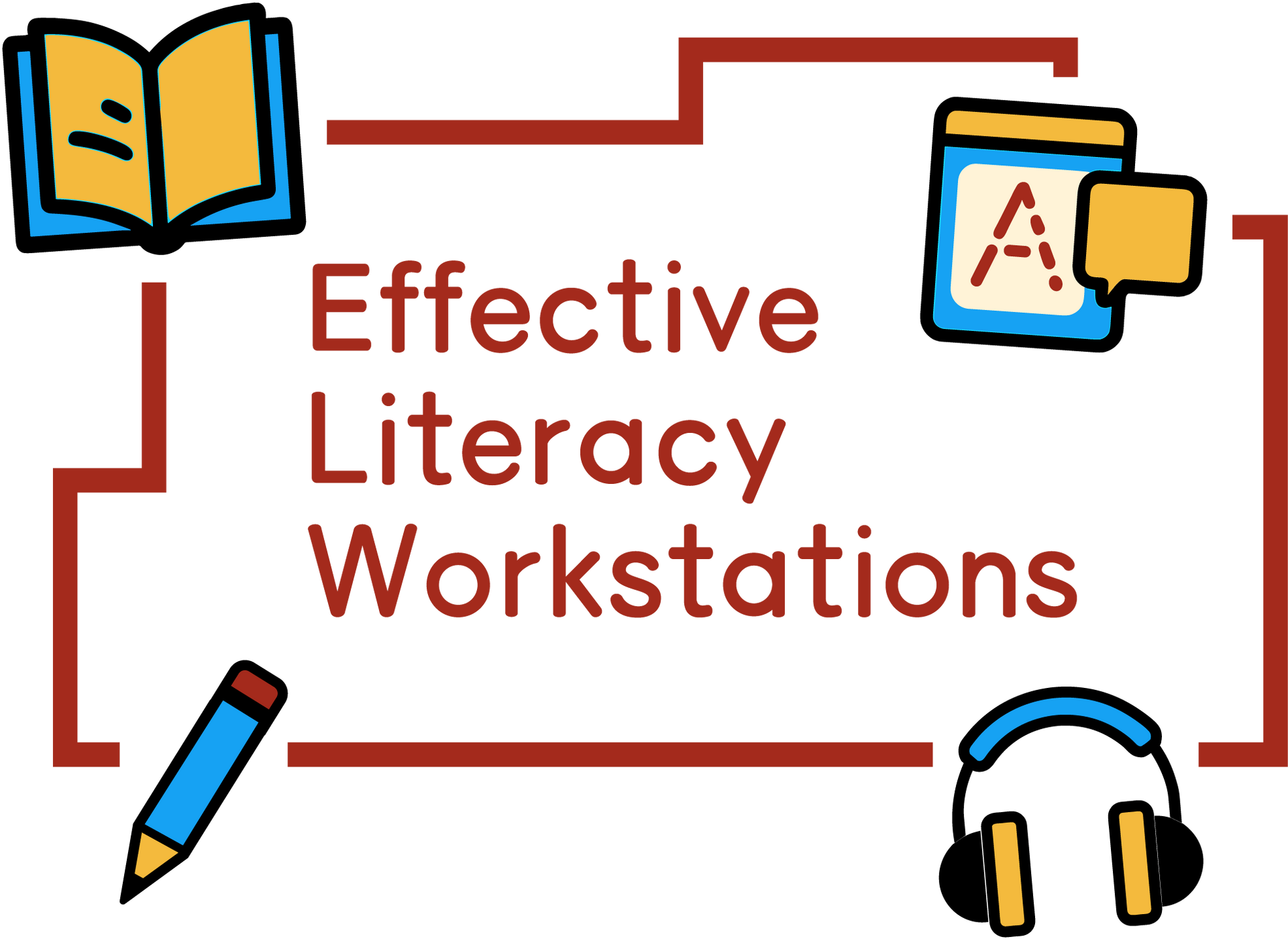K-2 Professional Learning Courses on Effective Literacy Instruction
“Science of reading” instruction demands a lot from K-2 teachers. They need to teach phonics and phonemic awareness, and to develop the skills required for comprehension: background knowledge, vocabulary, and the ability to make connections and inferences. It takes a skillful balancing act to incorporate all of these elements into each literacy block. These courses were developed in collaboration with teachers who have honed their practice over many years, focusing on two common challenges for K-2 teachers: implementing effective workstations and developing student discourse. They focus on instructional practices, and can be used with any curriculum.

Throughout these courses, teachers will be able to:
- see what effective practices look like in real classrooms, including some for their specific grade
- hear from exemplar teachers about how and why they put those practices in place
- understand how to troubleshoot and respond to challenges
- try practices out in their own classrooms
Coming soon!
Course #1
Effective Literacy Workstations
Effective workstations require that students know how to work independently of the teacher.
Effective workstations require that students know how to work independently of the teacher. This course addresses:
- Developing a classroom culture that supports student independence
- Using data to group students and to differentiate work given to students
- Supporting student success by practicing every detail of how students will: identify their station, know which work to do, know who to ask for help, know when and how to work with others, and be accountable for their work
- Introducing common workstations: word work, technology, writing, library/independent reading, and needs-based small groups (NBSG)
Course Outline
- Course Launch | Importance of Literacy Workstations
- Building Classroom Culture and Routines
- Launching Literacy Workstations
- Word Work Stations
- Writing, Library, and Technology Stations
- Data and Grouping
- The Needs-based Small Group Station
- Troubleshooting Workstations
- Wrap Up: How has your focus changed?
- End of Session One | Survey
Companion Materials
 See purchase options
See purchase optionsAs a complement to this course, we offer a set of activities that can be used for the word work station in Kindergarten, 1st, and 2nd grades. These materials feature activity types that repeat with increasing difficulty to align with the progression of instructional literacy content throughout the school year. They also feature materials with various levels of challenge for each grade, so that activities can be tailored to meet each student’s needs.
We focus specifically on word work because it is the workstation that is most demanding for teachers to plan, especially if the work is differentiated, which is best practice for supporting maximum student progress.
The materials are explained in an optional section in Session 4 of the course. The materials can be purchased through SERP. They are not a necessary component of the course.
Course #2
Supporting Student Discourse
This course will emphasize the increase in rigor and student ownership that student discourse affords.
Teachers will systematically be taken through the steps to build their own discourse practice, and to develop the strategies to troubleshoot when challenges arise. These include:
- the steps of establishing a discourse culture; discourse fundamentals
- anticipating and troubleshooting challenges
- ratcheting up the rigor of discourse over time
- gradually relinquishing ownership to students over time
Course Outline
pending
Companion Materials
 See purchase options
See purchase optionsThis course has a tool that can be used to track student progress: the Classroom Discourse 5x8 Card. Named for its convenient size, it can be stuck in your notebook, clipped to your clipboard, or carried in your bag. It features five student vital actions that are indicators of a classroom that supports effective discourse. They are designed to be easy to observe. The focus on student rather than teacher actions allows teachers and observers (coaches or principals) to discuss what students are doing, and what actions might encourage them to engage more effectively in discourse. The student vital actions are supported by specific content teachers will be viewing in the course.


